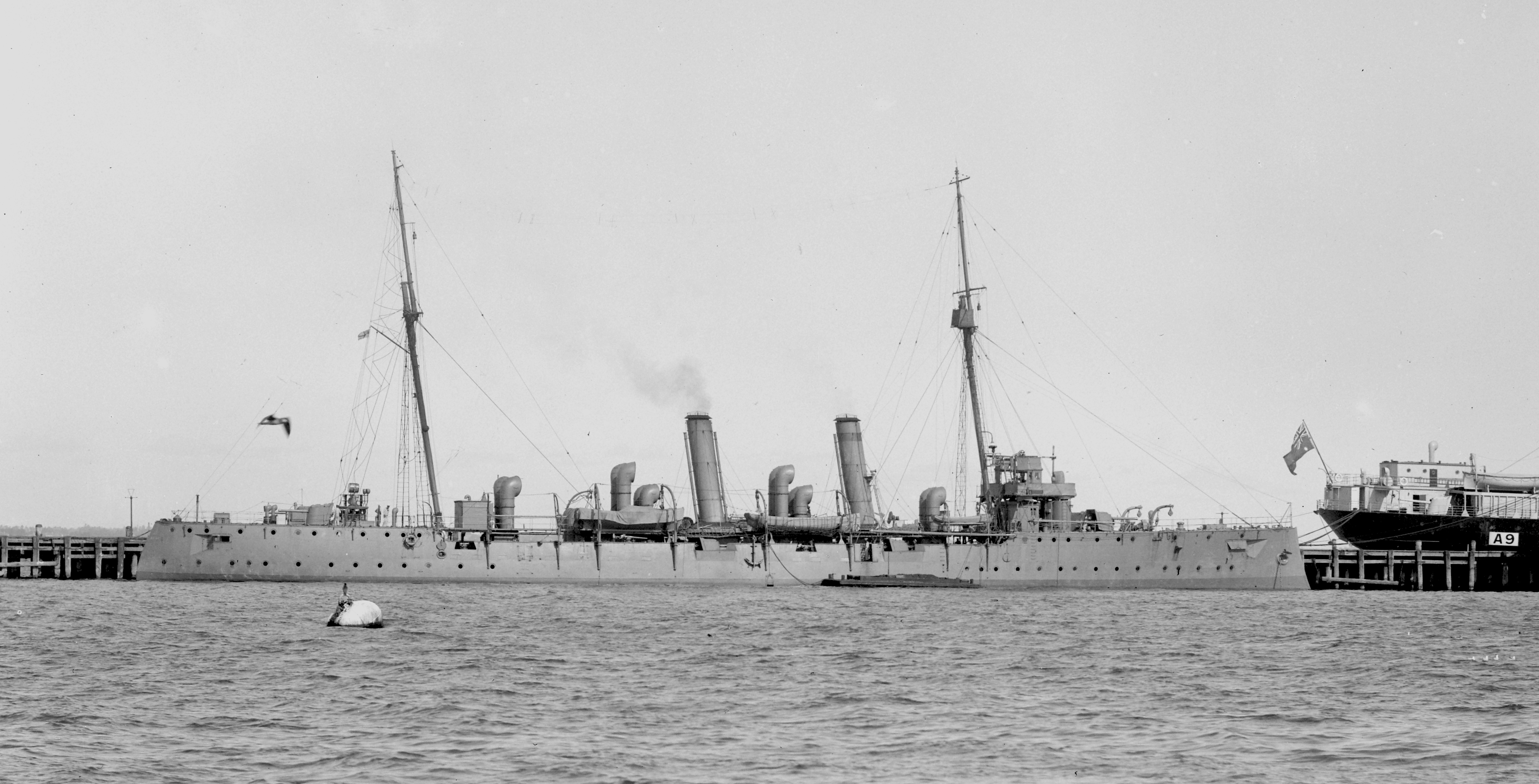HMS Pyramus (1897) on:
[Wikipedia]
[Google]
[Amazon]
HMS ''Pyramus'' was a

''World War I Naval Combat'' webpage
''Miramar Ship Index listing''
* Imperial War Museum Book of the War at Sea 1914–1918. * Gardiner, Robert, ed. ''Conways All the Worlds Fighting Ships 1860-1905''. New York: Mayflower Books Inc., 1979. . {{DEFAULTSORT:Pyramus (1897) Pelorus-class cruisers of the Royal Navy Ships built on the River Tyne 1897 ships World War I cruisers of the United Kingdom
protected cruiser
Protected cruisers, a type of naval cruiser of the late-19th century, gained their description because an armoured deck offered protection for vital machine-spaces from fragments caused by shells exploding above them. Protected cruisers re ...
of the Royal Navy
The Royal Navy (RN) is the United Kingdom's naval warfare force. Although warships were used by English and Scottish kings from the early medieval period, the first major maritime engagements were fought in the Hundred Years' War against F ...
. There were eleven "Third class" protected cruisers in the class, which was designed by Sir William White. While well armed for their size, they were primarily workhorses for the overseas fleet on "police" duties and did not serve with the main battlefleet.
They displaced 2,135 tons, had a crew complement of 224 men and were armed with eight QF 4 inch (102 mm, 25 pounder) guns, eight 3-pounder guns, three machine guns, and two 18 inch (457 mm) torpedo tube
A torpedo tube is a cylindrical device for launching torpedoes.
There are two main types of torpedo tube: underwater tubes fitted to submarines and some surface ships, and deck-mounted units (also referred to as torpedo launchers) installed aboa ...
s. With reciprocating triple expansion engines and a variety of boilers, the top speed was .
HMS ''Pyramus'' was laid down at Palmers Shipbuilding and Iron Company
Palmers Shipbuilding and Iron Company Limited, often referred to simply as "Palmers", was a United Kingdom of Great Britain and Ireland, British shipbuilder, shipbuilding company. The Company was based in Jarrow, County Durham, in north-eastern ...
, Jarrow
Jarrow ( or ) is a town in South Tyneside in the county of Tyne and Wear, England. It is east of Newcastle upon Tyne. It is situated on the south bank of the River Tyne, about from the east coast. It is home to the southern portal of the Tyne ...
in May 1896, and launched on 15 May 1897.
She served in various colonial posts, including in the Mediterranean Fleet
The British Mediterranean Fleet, also known as the Mediterranean Station, was a formation of the Royal Navy. The Fleet was one of the most prestigious commands in the navy for the majority of its history, defending the vital sea link between t ...
in 1901–02. Commander Alfred Ernest Albert Grant was appointed in command on 2 August 1901. In October 1902 she was reported to be visiting Suda Bay
Souda Bay is a bay and natural harbour near the town of Souda on the northwest coast of the Greek island of Crete. The bay is about 15 km long and only two to four km wide, and a deep natural harbour. It is formed between the Akrotiri ...
at Crete
Crete ( el, Κρήτη, translit=, Modern: , Ancient: ) is the largest and most populous of the Greek islands, the 88th largest island in the world and the fifth largest island in the Mediterranean Sea, after Sicily, Sardinia, Cyprus, and ...
.
In 1914
This year saw the beginning of what became known as World War I, after Archduke Franz Ferdinand of Austria, heir to the Austrian throne was Assassination of Archduke Franz Ferdinand, assassinated by Serbian nationalist Gavrilo Princip. It als ...
she formed part of the escort for the New Zealand Force which occupied German Samoa (now Samoa
Samoa, officially the Independent State of Samoa; sm, Sāmoa, and until 1997 known as Western Samoa, is a Polynesian island country consisting of two main islands (Savai'i and Upolu); two smaller, inhabited islands (Manono Island, Manono an ...
). In July 1915 she was present at the Rufiji river delta action when the monitors
Monitor or monitor may refer to:
Places
* Monitor, Alberta
* Monitor, Indiana, town in the United States
* Monitor, Kentucky
* Monitor, Oregon, unincorporated community in the United States
* Monitor, Washington
* Monitor, Logan County, West Vir ...
and destroyed the German cruiser .
She was sold for scrap on 21 April 1920.
Commanding officers
* CommanderJohn Michael de Robeck
Admiral of the Fleet Sir John Michael de Robeck, 1st Baronet, (10 June 1862 – 20 January 1928) was an officer in the Royal Navy. In the early years of the 20th century he served as Admiral of Patrols, commanding four flotillas of destroyers.
...
- ''in March 1901''
* Commander Arthur Ernest Albert Grant - 2 August 1901
Notes

References
''World War I Naval Combat'' webpage
''Miramar Ship Index listing''
* Imperial War Museum Book of the War at Sea 1914–1918. * Gardiner, Robert, ed. ''Conways All the Worlds Fighting Ships 1860-1905''. New York: Mayflower Books Inc., 1979. . {{DEFAULTSORT:Pyramus (1897) Pelorus-class cruisers of the Royal Navy Ships built on the River Tyne 1897 ships World War I cruisers of the United Kingdom